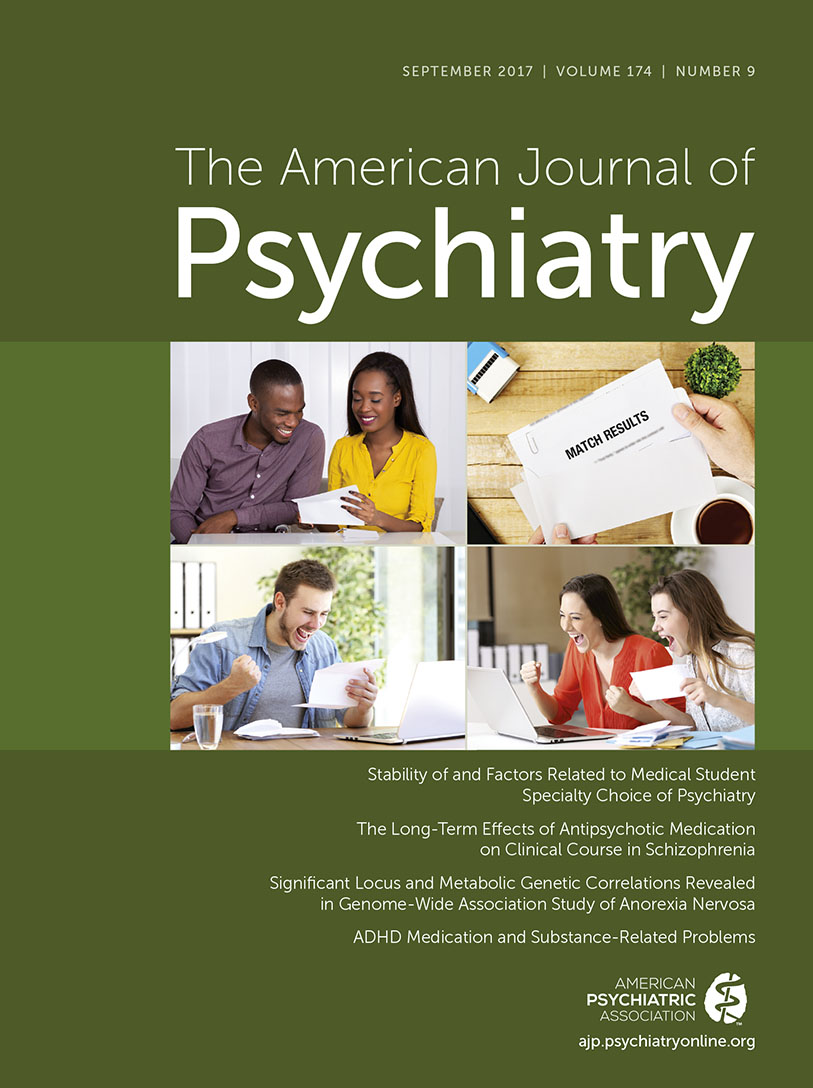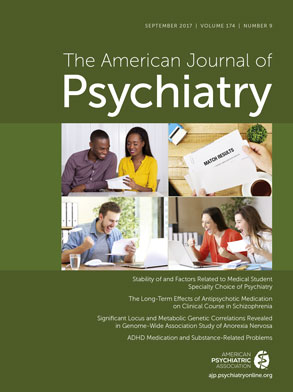From prior systematic reviews (
27–
29), we identified nine studies that compared antipsychotic treatment versus no pharmacotherapy in medication-naive first-episode psychosis patients with follow-up lasting at least 1 year; for studies utilizing mirror image historical controls treated in the preantipsychotic era, we required that the two treatment groups be treated within a 10-year period at the same facility. Because these studies were conducted before the practice of maintenance treatment with antipsychotics was widely adopted, in most cases patients received antipsychotics during hospitalization and subsequently were followed medication-free (
28). Six of these studies utilized a mirror image design and compared longitudinal outcomes over periods of 1–5 years in a total of 7,161 first-episode psychosis patients treated in the preantipsychotic era compared with 3,510 first-episode psychosis patients treated in the antipsychotic era. Because findings from these mirror image studies are potentially confounded by factors that may have changed during the interval of time between treatment cohorts, firm conclusions cannot be drawn; however, no study reported poorer long-term outcomes in patients initially treated with antipsychotics. The three studies that focused on hospitalization rates (
30–
32) found increased rates of discharge and reduced rates of hospitalization associated with initial antipsychotic treatment, whereas the three studies (
26,
33,
34) that measured functional outcomes reported higher rates of remission and lower rates of deterioration in the group initially treated with antipsychotics. Three additional studies provided longitudinal follow-up of medication-naive first-episode or early-course patients randomly assigned to medication compared with no medication—a design that avoids the potential limitations of nonrandomized mirror image studies using historical controls. In the first, May and colleagues (
35) randomly assigned 228 first-admission patients with schizophrenia to psychotherapy, milieu treatment, antipsychotic, ECT, or antipsychotic plus psychotherapy for 1 year, after which nonresponders were openly treated with antipsychotics. Patients assigned to antipsychotic (alone or in combination) or to ECT spent less time in the hospital over the subsequent 3 years and exhibited superior social functioning; the improved outcome associated with initial antipsychotic treatment appeared to dissipate after 3 years of follow-up (
36). The dissipation of the effect of initial medication status may reflect that, by the end of year 3, maintenance antipsychotic treatment was common (100% in the medication group and 85% in the psychotherapy group), consistent with clinical practice in the mid-1960s. Two other studies have been cited as evidence for negative long-term effects of initial antipsychotic treatment, but both involved sampling bias that may have confounded the results. In the first, Schooler and colleagues (
37) conducted a 1-year follow-up of the 299 participants who were successfully discharged in the NIMH Collaborative Study of Phenothiazine Treatment in Schizophrenia (
22) and found that individuals who received placebo during the initial 6-week trial were less likely to relapse after hospital discharge compared with individuals who received phenothiazine. Because dropout rates due to nonresponse during the initial randomized trial differed substantially between treatment groups (2% in the phenothiazine group compared with 29% in the placebo group), it is highly likely that the sample for the follow-up study of discharged patients contained a disproportionate number of poor-prognosis subjects in the phenothiazine group, since these subjects would not have achieved discharge if treated with placebo. Similarly, in a study of acutely psychotic patients, most of whom were medication naive, Rappoport and colleagues (
38) reported poorer outcomes over a 3-year follow-up in patients who initially were randomly assigned to treatment with chlorpromazine compared with patients randomly assigned to placebo during the hospitalization. This design is also confounded by unequal attrition rates during the initial treatment phase—45% of placebo-treated patients dropped out compared with 26% of patients treated with chlorpromazine. After correction for the unequal loss of poor-prognosis patients in the placebo group, differences in outcomes were no longer significant between groups.
Additional information about the long-term effect of antipsychotic exposure has come from two contemporary analyses. Hegarty and colleagues (
18) performed a meta-analysis comparing individuals diagnosed with schizophrenia by decade from 1895 to 1992 and found that outcomes substantially improved following the introduction of antipsychotic medication midcentury. However, outcomes became less positive following the introduction of more restrictive Kraepelinian diagnostic definitions in the 1980s, which by requiring a duration of illness of at least 6 months, decrease the likelihood of spontaneous remission. Kraepelinian diagnostic systems were similarly associated with more negative outcomes when applied in the preneuroleptic era (1895–1925). Finally, recent naturalistic studies in rural areas of China provide an opportunity to examine individuals with long durations of illness who have remained medication naive and are diagnosed using contemporary criteria. In a 14-year follow-up study comparing medicated with never-medicated individuals with schizophrenia, outcomes were poorer in the never-medicated group, including rates of partial and complete remission, homelessness, and mortality (
39). Approximately 10% of individuals who had never been treated achieved remission, and approximately 8% were partially remitted compared with 30% and 37%, respectively, in individuals who regularly took medication. Because factors such as family involvement and characteristics of illness may have influenced medication status in these subjects, conclusions regarding the causal role of antipsychotics in improved long-term outcomes must be tempered. Nevertheless, this study and similar studies (
40–
42) do not provide evidence for a long-term negative effect of medication.

